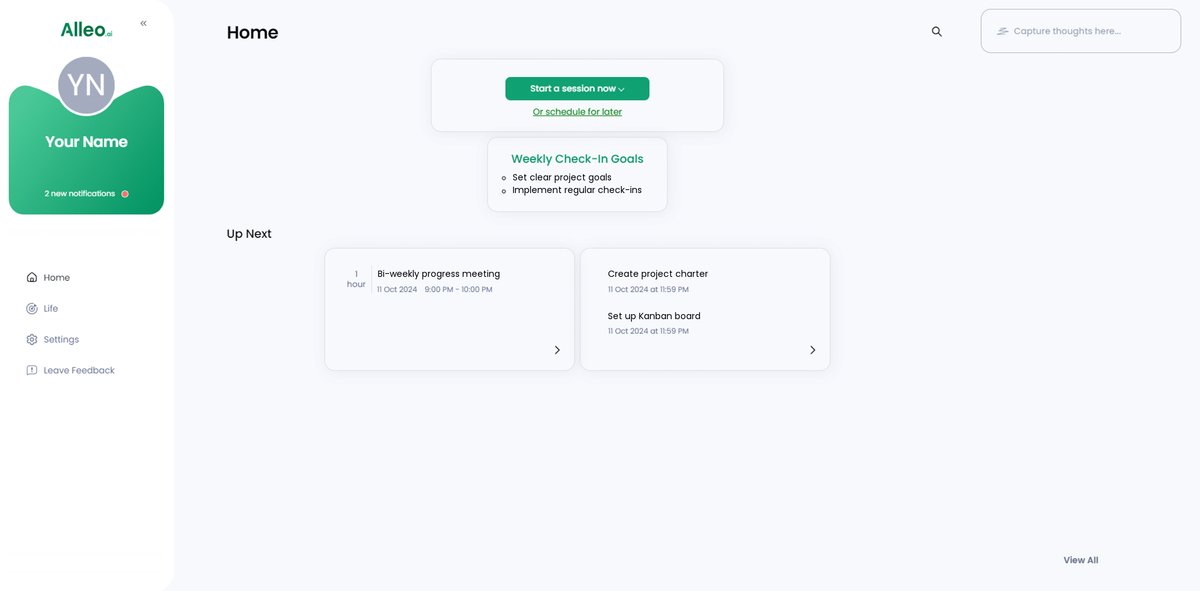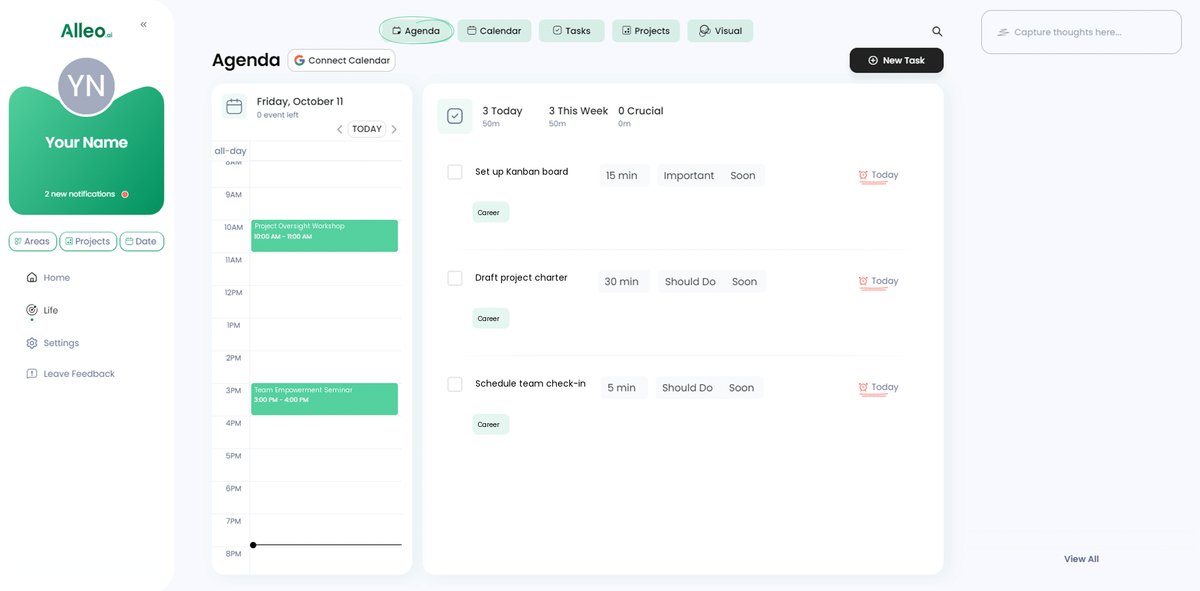Master Project Oversight Without Micromanaging: 5 Strategies for Effective Management
Are you struggling to balance effective project oversight without micromanaging? Finding the right approach to project management techniques can be challenging.
As a life coach, I’ve helped many nonprofit leaders navigate these challenges and implement balanced oversight approaches.
In this article, you’ll discover strategies to set clear goals, implement regular check-ins, and use remote project monitoring tools effectively. We’ll explore key performance indicators for projects and communication strategies for managers.
These methods will help you empower your team and foster a culture of trust, promoting team autonomy and accountability.
Let’s dive into effective project oversight without micromanaging.

The Dilemma of Micromanagement in Nonprofit Project Oversight
Micromanagement often leads to decreased morale, stifled creativity, and inefficiencies. Many clients report feeling overwhelmed by the need to monitor every detail, highlighting the importance of effective project oversight without micromanaging.
Nonprofit leaders face unique challenges in achieving balanced oversight approaches. Limited resources make balancing oversight with team autonomy and accountability difficult.
In my experience, leaders struggle to give up control and implement effective delegation strategies. They fear important tasks will fall through the cracks without constant monitoring.
But here’s the catch: too much control can backfire. It creates a stressful environment and reduces team efficiency, emphasizing the need for trust-building in project teams.
To navigate this delicate balance, you need a structured yet flexible approach to project management techniques. Let’s explore how to achieve effective project oversight without micromanaging.

High-Level Strategy for Effective Project Oversight without Micromanagement
Overcoming this challenge of effective project oversight without micromanaging requires a few key steps. Here are the main areas to focus on to make progress in balanced oversight approaches.
- Set clear goals and expectations upfront: Define comprehensive SMART goals and communicate roles clearly, emphasizing goal-setting and progress tracking.
- Implement regular check-ins without micromanaging: Schedule bi-weekly support-focused meetings to enhance team autonomy and accountability.
- Use project management techniques and tools for transparency: Utilize Kanban boards and time tracking features as remote project monitoring tools.
- Empower team members to make decisions: Delegate authority based on strengths, implementing effective delegation strategies.
- Foster open communication and feedback channels: Establish regular feedback loops and maintain an open-door policy, focusing on communication strategies for managers and trust-building in project teams.
Let’s dive into these strategies for effective project oversight without micromanaging!
1: Set clear goals and expectations upfront
Setting clear goals and expectations is crucial for effective project oversight without micromanaging.
Actionable Steps:
- Conduct a goal-setting workshop: Engage your team in a workshop to define comprehensive SMART goals aligned with your nonprofit’s strategic objectives, promoting team autonomy and accountability.
- Develop and distribute a project charter: Clearly outline each team member’s role and responsibilities in a detailed project charter, supporting effective delegation strategies.
- Use visual aids like Gantt charts: Map out project timelines and host a kickoff meeting to walk through the project plan and address any questions, enhancing goal-setting and progress tracking.
Key benefits of clear goal-setting:
- Improved team alignment
- Enhanced accountability
- Reduced need for micromanagement
Explanation:
These steps matter because they ensure everyone is aligned and committed to the project goals, reducing the need for constant oversight and promoting effective project oversight without micromanaging.
For instance, using visual aids like Gantt charts can help map out project timelines effectively, supporting balanced oversight approaches.
This clarity fosters a sense of ownership and accountability among team members, ultimately enhancing productivity and morale while building trust in project teams.
Let’s move on to implementing regular check-ins without micromanaging.

2: Implement regular check-ins without micromanaging
Regular check-ins are essential for effective project oversight without micromanaging while maintaining team autonomy.
Actionable Steps:
- Schedule bi-weekly progress meetings: Focus on offering support and identifying obstacles rather than scrutinizing every detail, promoting balanced oversight approaches.
- Encourage team updates via collaborative tools: Use project management software to create a shared progress dashboard, fostering transparency and supporting remote project monitoring.
- Establish asynchronous check-ins: Set up a system for regular written updates to avoid disrupting workflow, enhancing communication strategies for managers.
Explanation:
These steps matter because they facilitate ongoing project alignment without micromanaging. For example, using project management software can help visualize progress and identify issues early, supporting effective delegation strategies.
This approach builds trust and empowers team leaders, leading to higher morale and productivity while maintaining team autonomy and accountability.
Next, we’ll explore using project management techniques for transparency.

3: Use project management tools for transparency
Using project management tools is essential for maintaining transparency and ensuring effective project oversight without micromanaging.
Actionable Steps:
- Implement tools like Kanban boards: Train your team on how to use these boards to track progress visually and manage tasks efficiently, promoting team autonomy and accountability.
- Utilize time tracking and workload management features: Monitor team workload to prevent burnout and ensure balanced oversight approaches in resource allocation.
- Leverage analytics for decision-making: Regularly review project data to identify trends and areas for improvement, using key performance indicators for projects.
Top project management techniques and remote project monitoring tools for nonprofits:
- Asana
- Trello
- ClickUp
Explanation:
These steps matter because they ensure transparency and efficiency in project management while empowering team leaders.
For example, using Kanban boards helps visualize progress and identify bottlenecks in real-time, supporting effective delegation strategies.
This approach fosters a collaborative environment, making it easier for team members to stay aligned and productive, enhancing trust-building in project teams.
Next, we’ll explore how to empower team members to make decisions, furthering effective project oversight without micromanaging.

4: Empower team members to make decisions
Empowering team members to make decisions is crucial for fostering a culture of trust and autonomy, which is essential for effective project oversight without micromanaging.
Actionable Steps:
- Delegate authority according to strengths: Assign specific decision-making responsibilities based on each team member’s expertise and capabilities, utilizing effective delegation strategies.
- Create a safe space for innovation: Implement a “fail-fast” policy that encourages experimentation and learning from mistakes, promoting team autonomy and accountability.
- Develop a mentorship program: Pair experienced leaders with emerging talent to provide guidance and support, enhancing leadership skills within the team and empowering team leaders.
Explanation:
These steps matter because they promote ownership and accountability among team members, key aspects of balanced oversight approaches.
For example, implementing a mentorship program can significantly boost confidence and skills, making the team more self-reliant and reducing the need for micromanaging.
According to John Maxwell, leaders should hire motivated people and then avoid demotivating them through excessive oversight, emphasizing trust-building in project teams.
This approach leads to a more motivated and innovative team, ultimately enhancing project outcomes and facilitating effective project oversight without micromanaging.
Next, we’ll explore fostering open communication and feedback channels, crucial communication strategies for managers.

5: Foster open communication and feedback channels
Fostering open communication and feedback channels is essential for maintaining transparency and trust within your team, which is crucial for effective project oversight without micromanaging.
Actionable Steps:
- Establish regular feedback loops: Use anonymous surveys to gather honest feedback from team members about their experiences and challenges, supporting team autonomy and accountability.
- Maintain an open-door policy: Schedule regular one-on-one meetings to discuss individual progress, concerns, and suggestions in a private setting, enhancing communication strategies for managers.
- Encourage collaborative problem-solving sessions: Host brainstorming meetings where team members can collectively address project issues and share innovative solutions, promoting balanced oversight approaches.
Key elements of effective communication:
- Active listening
- Constructive feedback
- Clarity in messaging
Explanation:
These steps matter because they enhance trust and transparency within the team. For example, maintaining an open-door policy allows team members to voice concerns freely, fostering a collaborative environment and supporting effective project management techniques.
This approach also ensures that everyone feels heard and valued, which boosts morale and productivity, contributing to trust-building in project teams.
Next, we’ll explore how using Alleo can support these strategies for effective project oversight without micromanaging.

Partner with Alleo for Effective Project Oversight
We’ve explored the challenges of managing effective project oversight without micromanaging. Did you know you can work directly with Alleo to make this process smoother and more efficient, implementing balanced oversight approaches?
Setting up with Alleo is straightforward. Start by creating an account and crafting a personalized plan that incorporates effective delegation strategies and goal-setting techniques.
The AI coach will provide tailored support, following up on your progress and handling changes as needed, enhancing team autonomy and accountability. You’ll receive accountability reminders via text and push notifications, acting as remote project monitoring tools.
Ready to get started for free and improve your project management techniques? Let me show you how!
Step 1: Log In or Create Your Account
To begin your journey towards effective project oversight without micromanagement, log in to your existing Alleo account or create a new one to access personalized AI coaching support.

Step 2: Choose Your Focus Area
Select “Setting and achieving personal or professional goals” to align with your nonprofit leadership challenges, helping you develop strategies for effective project oversight without micromanaging your team.

Step 3: Selecting the life area you want to focus on
Choose “Career” as your focus area to address project oversight challenges, allowing Alleo’s AI coach to provide targeted strategies for effective management without micromanaging your nonprofit team.

Step 4: Starting a Coaching Session
Begin your journey with Alleo by scheduling an intake session, where you’ll collaboratively set clear goals and expectations for your nonprofit project management, mirroring the strategies outlined in the article to avoid micromanagement while maintaining effective oversight.

Step 5: Viewing and managing goals after the session
After your coaching session, access your discussed goals on the app’s home page, where you can easily track progress and make adjustments to align with your nonprofit’s project oversight strategies.

Step 6: Adding events to your calendar or app
Easily add project milestones, check-ins, and team meetings to your calendar or app, enabling you to track your progress in solving micromanagement challenges while leveraging the AI coach’s calendar and task features for improved oversight and accountability.

Wrapping Up: Empower Your Team with Trust and Oversight
We’ve covered a lot, haven’t we?
Balancing effective project oversight without micromanaging can be tricky, but it’s not impossible. By setting clear goals, implementing regular check-ins, using project management techniques and remote project monitoring tools, empowering team leaders, and fostering open communication strategies for managers, you can effectively manage your projects.
Remember, it’s all about trust and autonomy. Your team will thrive when they feel empowered and supported, which is key to balanced oversight approaches and effective delegation strategies.
And don’t forget, Alleo can help you implement these strategies seamlessly, supporting team autonomy and accountability. Why not give it a try?
You’ve got this! Share your experiences and tips on trust-building in project teams in the comments below.